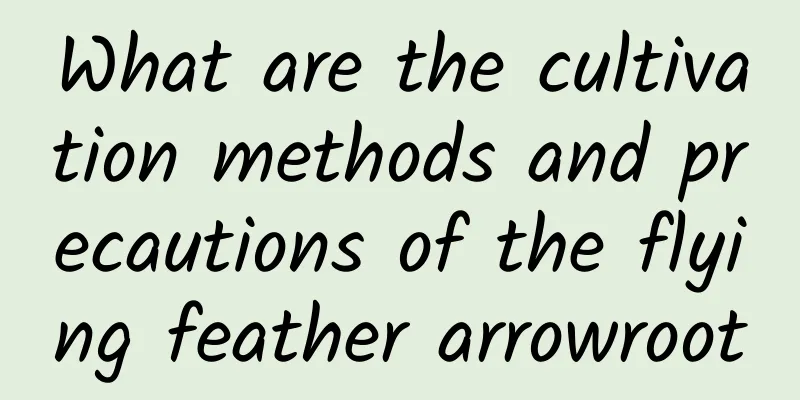What are the cultivation methods and precautions of the flying feather arrowroot

Cultivation method of flying feather arrowrootThe feathered arrowroot is a plant of the Zingiberales, Marantaceae, and genus Marantroot. Its leaves look very much like feathers. It is suitable for indoor potted plants and garden planting. It can be propagated by division. There are more than twenty common species. The flying feather arrowroot prefers a semi-shady environment and cannot tolerate exposure to strong light, but the maintenance environment cannot be too dark. It is best to provide bright scattered light and more sunlight in winter. It is not resistant to high temperatures or cold. It needs ventilation, watering, and shade in summer and needs to be moved indoors for maintenance in winter. The suitable temperature for the growth of the flying feather arrowroot is between 22-28 degrees during the day, and the night temperature is between 18-22 degrees. It will stop growing when the temperature is above 32 degrees in summer. Apply thin liquid fertilizer once a month during the growth period. Basically, no fertilizer is required in winter and summer. Watering methodThe arrowroot likes a humid environment. The soil should be kept moist in spring, summer and autumn. Spray water on the leaves in moderation in summer. Control watering in winter and keep the soil in the pot dry. Even if the leaves wither, new buds will sprout again in the spring of the following year. Fertilization methodThe flying feather arrowroot grows vigorously in spring and autumn. A thin layer of fertilizer can be applied once a month. Be careful not to make the concentration too high. Apply thin fertilizer frequently. Basically, no fertilizer is needed in winter and summer. Pruning methodsThe ornamental value of the flying feather arrowroot is high. During the growth period, the weak branches and buds should be cut off to make the plant look stronger and healthier. This can also reduce the consumption of nutrients and is beneficial to the growth of the flying feather arrowroot. Things to note when growing the feather taroDuring the cultivation period of the flying feather arrowroot, you can choose to mix leaf mold, peat, perlite, and river sand to make the culture soil. When potting, put some filter layers to facilitate root drainage. In spring and autumn, you should always keep the substrate moist. Apply thin liquid fertilizer once a month and maintain it in a sunny position, but avoid direct sunlight. |
<<: Should I use a large or small pot for fuchsia?
>>: What are the cultivation methods and precautions of Qilixiang
Recommend
Diseases and Pests of Trachelospermum variegatedum and Their Control
Diseases and their control of Trachelospermum var...
How to grow Golden Edge Tiger Pilan
1. Soil Give it good ventilation soil for cultiva...
What flowers are suitable for growing in Ulanqab? What are the city flowers and trees?
1. Climate characteristics of Ulanqab Ulanqab has...
What does Perilla look like?
1. Leaves The leaves of Perilla are broadly ovate...
Geranium cutting method and time
1. Cutting method 1. Branch selection: It is impo...
Jiangxi vegetable varieties and pictures What are the specialty vegetables in Jiangxi
Jiangxi has a relatively good natural environment...
The difference between bamboo begonia and four-season begonia
1. Leaf Difference The leaves of the bamboo begon...
How to make calendula bloom all year round
Natural flowering period of calendula In the natu...
What fertilizer is good for money tree
1. Is there a high demand for fertilizer? In gene...
How long does it take for a jade pendant to be used?
Jade Pendant Service Time After the jade pendant ...
How to prune ivy
1. More resistant to shearing Pruning is very imp...
How to propagate ivy using water cuttings
1. Time Selection The best time to plant ivy in w...
When to plant dahlias
1. Planting time The approximate planting time is...
When is the right time to prune computer baby?
Computer baby pruning function Computer baby is a...
New technology for freshwater culture of Penaeus vannamei
The whiteleg shrimp is a euryhaline tropical shri...









